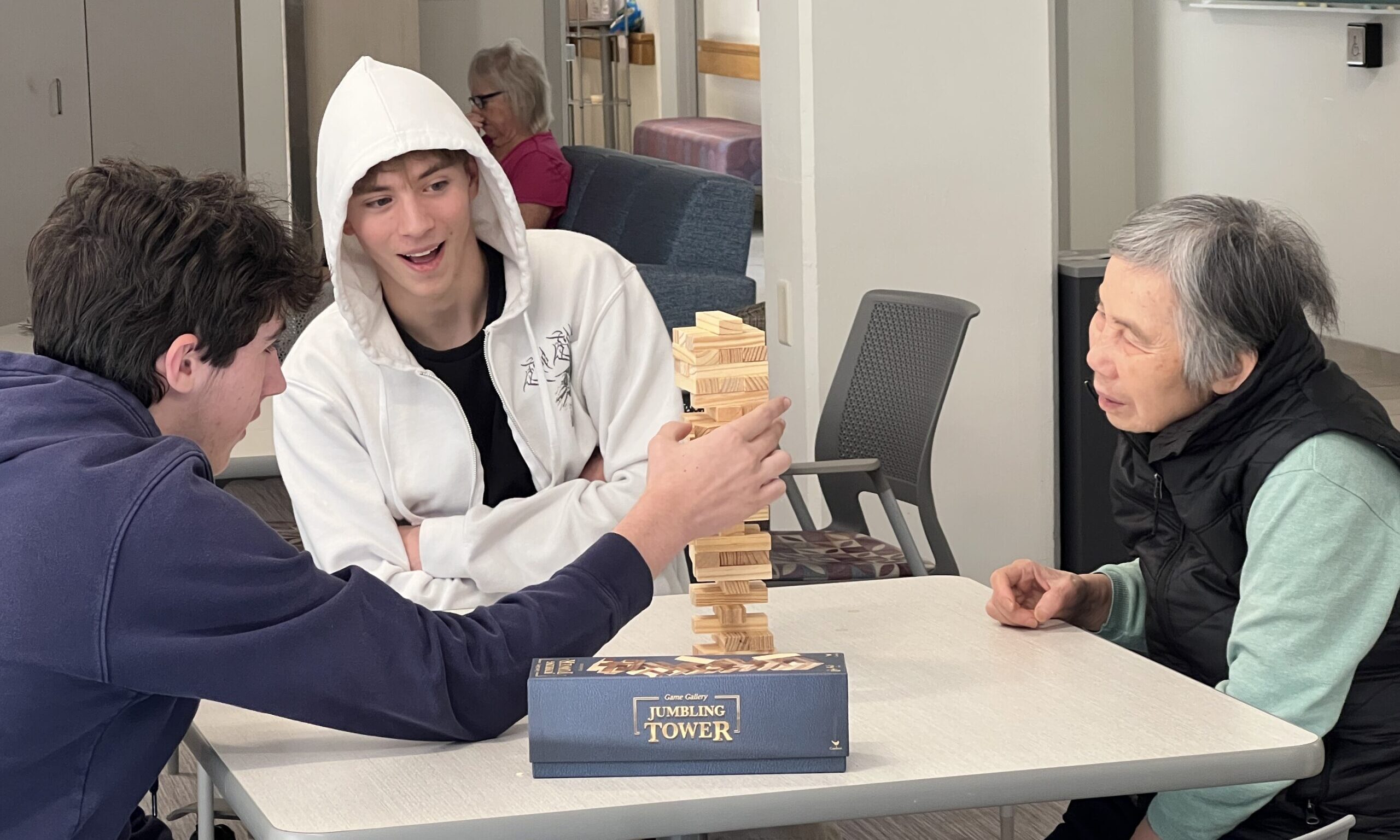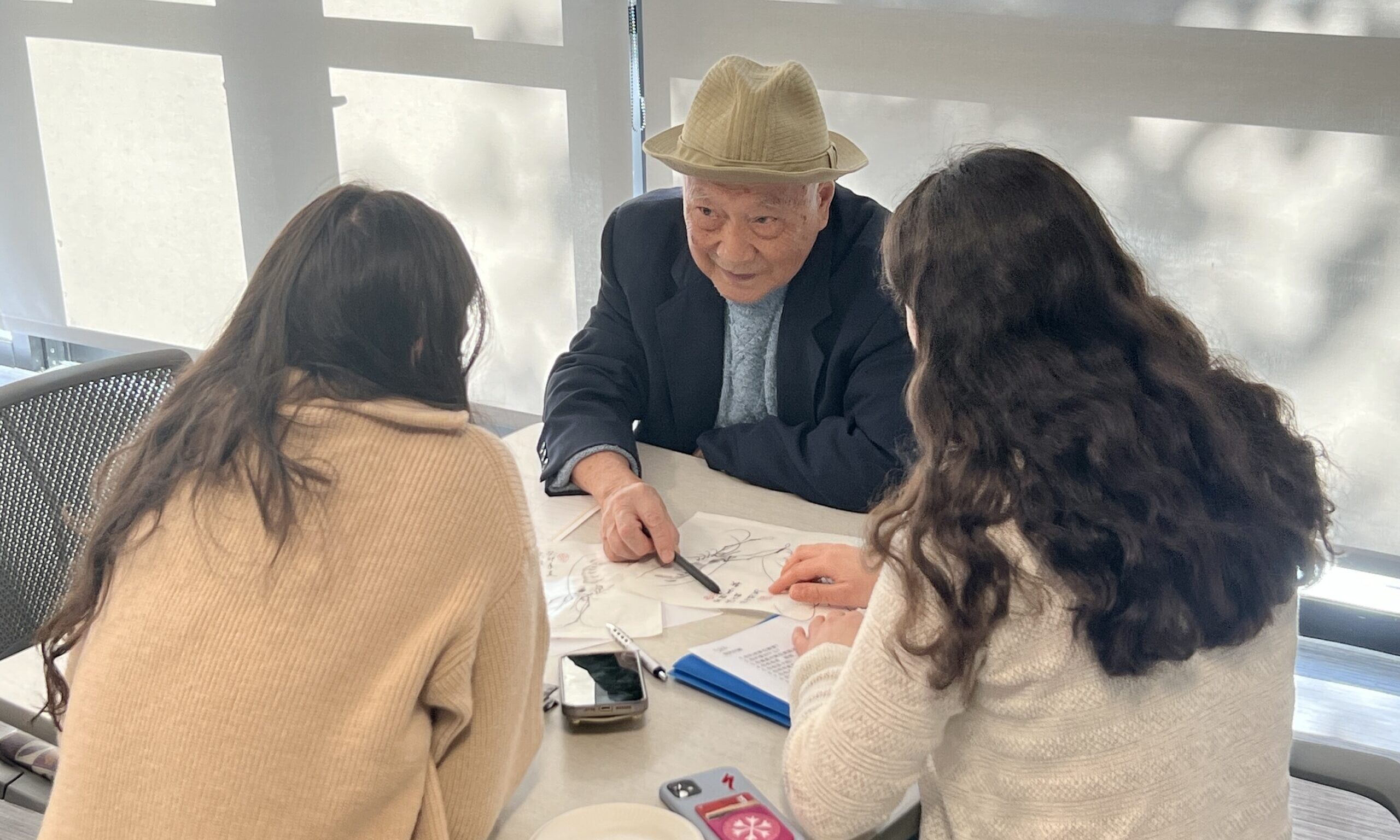Class: Intermediate Chinese: The World and Me
Grade: Upper School
Teacher: Shanshan Xu
How might we respectfully express curiosity about the lived experiences of a Chinese-speaking community at a local senior care facility? How might we exchange ideas and beliefs in an open-minded way? These were the essential questions that students in Chinese: The World and Me had when diving into a collaboration designed to challenge their speaking skills, deepen their understanding of Chinese, and foster connection with Hebrew SeniorLife residents.
Hebrew SeniorLife staff recently began supporting seniors at four Brookline Housing Authority apartment buildings with many older Mandarin-speaking residents. The Hiatt Center strategized on how Beaver could address Hebrew SeniorLife’s emerging need to create meaningful opportunities for interaction in residents’ native language while expanding on what students were already studying. In collaboration with Ms. Xu, plans were made to have Intermediate Chinese students connect with the Mandarin-speaking residents by visiting the facility.
This mutually beneficial partnership met a critical community-defined need while inspiring authentic, deeper learning. This is what we aim for when connecting with nonprofit organizations in our local and global communities. What’s more – this brought so much joy to all involved.
-Liz Latour, Director of the Hiatt Center

Prior to the first of three visits to the senior care facility, a representative from Hebrew SeniorLife came to discuss what to expect with students. The class identified multiple goals for their visits and practiced actively listening and responding in a thoughtful manner. Throughout this preparation, students displayed an eagerness to apply what they had been learning to a real-world scenario.
The class eased into the first visit by focusing on getting to know each resident. Students shared photos to describe their interests and hobbies, asked questions about each resident’s life, and took notes to reflect upon later. Students discovered that several of the residents have differing accents and dialects, encouraging them to problem-solve in real time and emphasize key words. Following the visit, the class reconvened to discuss what was working and what could be improved upon.
I had to problem-solve by trying to understand keywords to help myself figure out what they were saying. I also asked clarifying questions and let them know when I did not understand so they could try to relay the information in a different way.
-Dany Sidman ’26

During subsequent visits, students played games, heard stories, and shared what they learned about each resident with their classmates. Due to the collaboration taking place over several visits, students were able to form deeper relationships with each resident and collect enough information to create posters about them. These posters will be used to help English-speaking staff members and visitors at the facility learn more about each resident.
Students left the final visit with a clear sense of accomplishment and pride in the work they had done. On the bus ride home, the class shared their favorite stories from the collaboration and mentioned a feeling of sadness that it was coming to an end. One student passed around an ink wash painting a resident had created for her. Another detailed the familial history of a resident and the story of how she came to America. The impact of this cross-cultural exchange was setting in for students and the meaning of the work was felt by the entire class. Back at Beaver, several students expressed interest in going back to the facility to visit the residents outside of school.
This partnership expanded our classroom in an authentic and meaningful way for students and residents alike. Students learned vocabulary about the world organically and developed empathy towards the residents, understanding the challenges they face such as isolation and being Chinese speakers in an English-dominant society. They learned more than the utility of the language including the meaning and culture embedded into it.
-Shanshan Xu, Upper School Chinese
Beaver continues to partner with Hebrew SeniorLife across multiple disciplines and grades. In the BVR-X course The Art of Navigating Life, students visited residents to hear about their lived experiences and ask questions. Advanced Engineering students also frequently collaborate with the facility, designing items to make life easier for residents.The Hiatt Center plans to continue exploring ways to implement future visits to Hebrew SeniorLife that will expand upon the essential skills of collaboration, empathy, and creative problem-solving.

This program has made a lasting difference, helping to foster feelings of joy and belonging among senior living residents. Beaver students have played a critical role in reducing loneliness, exacerbated by the language barrier, and contributing to an inclusive community. Residents were touched by students’ efforts to connect, from creating handmade cards for their conversation partners to consistently approaching their interactions with curiosity and respect.
-Marissa Birne, Program Manager for Youth, Arts, and Volunteer Initiatives at Hebrew SeniorLife
More about this course: In this course, students will explore diverse lives and stories around the world, in particular the Chinese speaking communities. These stories will serve as windows and mirrors to students’ experiences and understandings of their identities as global citizens and Chinese language learners.